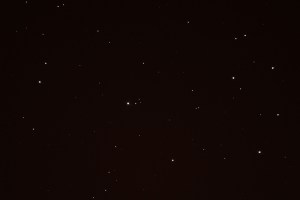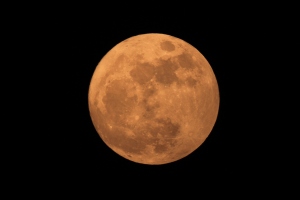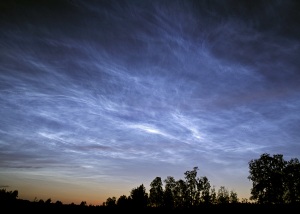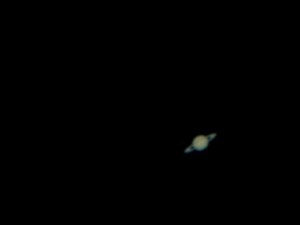Sunday 1st May – Venus is visible low down in the dawn sky from 05:10 BST, and if you have a flat eastern horizon Jupiter also rises just before the Sun
Tuesday 3rd May – New Moon
Wednesday 4th May – This evening the crescent Moon, which will be only 2% lit, lies just below the Pleiades star cluster. They will be low in a fairly bright sky (around 21:30 BST), but should be visible in binoculars to the WNW horizon, or a good target for those with a camera with a good zoom lens
Friday 6th May – Anyone up late (or early!) should keep a look out for Eta Aquarid meteors, from 03:30 BST until dawn (in the eastern sky). This shower has been known to peak at one meteor every few minutes, and with the recent New Moon the skies should be relatively dark until the Sun rises
Saturday 7th May – Mercury is at its Greatest Western Elongation (27°)
Wednesday 11th May – Jupiter and Venus appear less than a degree apart in the dawn sky after 04:50 BST
Sunday 15th May – Moon at Perigee (362,135 km). Saturn, Spica and the waxing gibbous Moon form a straight line around midnight, and faint comet C/2010 G2 Hill passes less than a degree away from Polaris the Pole Star
Tuesday 17th May – Full Moon
Wednesday 18th May – The red supergiant Antares lies just below and to the left of the bright Moon. Its name means “Rival of Mars”
Saturday 21st May – Just before dawn look for Venus using a pair of binoculars in the ENE sky. Nearby (and forming a right angled-triangle) will be Mercury and Mars
Monday 23rd May – This is the time of year to start looking for noctilucent clouds, which sometimes appear low down in the northwest (after sunset) and northeast (just before sunrise). These clouds are in the upper atmosphere and are usually too faint to see, becoming visible only when illuminated by sunlight from below the horizon while the lower layers of the atmosphere are in the Earth’s shadow
Thursday 26th May – As the Moon is largely absent tonight it’s a good night to look at deep-sky objects. M101 (the Pinwheel Galaxy), M51 (the Whirlpool Galaxy) and the Owl Nebula are all good targets around The Plough (or Big Dipper), as is M13 (the Great Globular Cluster) in the Hercules constellation(from midnight BST)
Friday 27th May – Moon at Apogee (405,005 km)
Sunday 29th May – The gathering of planets in the dawn sky continues, as at around 04:15 BST Venus will be low in the ENE sky, and higher up to the east Jupiter can be seen just below a waning crescent Moon.
Tuesday 31st May – The double-star Porrima can be located close to Saturn this evening, low to the southwest around midnight (BST), a great view through a telescope
Should the weather allow we’re targeting Saturn for better imaging this month, so keep watching for any new photos!
Remember, it can take your eyes up to 20 minutes to become properly dark adapted, and anything up to an hour for a telescope to reach ambient temperature outside (to ensure the best image), so give yourself plenty of time to get set up!





No comments:
Post a Comment